For this newsletter I asked a friend, Alvaro Pacheco from Montreal, to share his passion of postcards…
Why Postcards?
For years I have been obsessed by a small collection Alvaro bought at an auction in Montreal years ago. It all began over a glass of wine on a wet and windy night, Chez Les Portugais - sadly now closed - on the Main, Montreal. I dreaded going home, my daughter was away, my personal life was in a right mess, and I needed something else to think about. Alvaro started talking about a collection of postcards he had, showing me one from the Laura Lavoie-Baptiste collection.
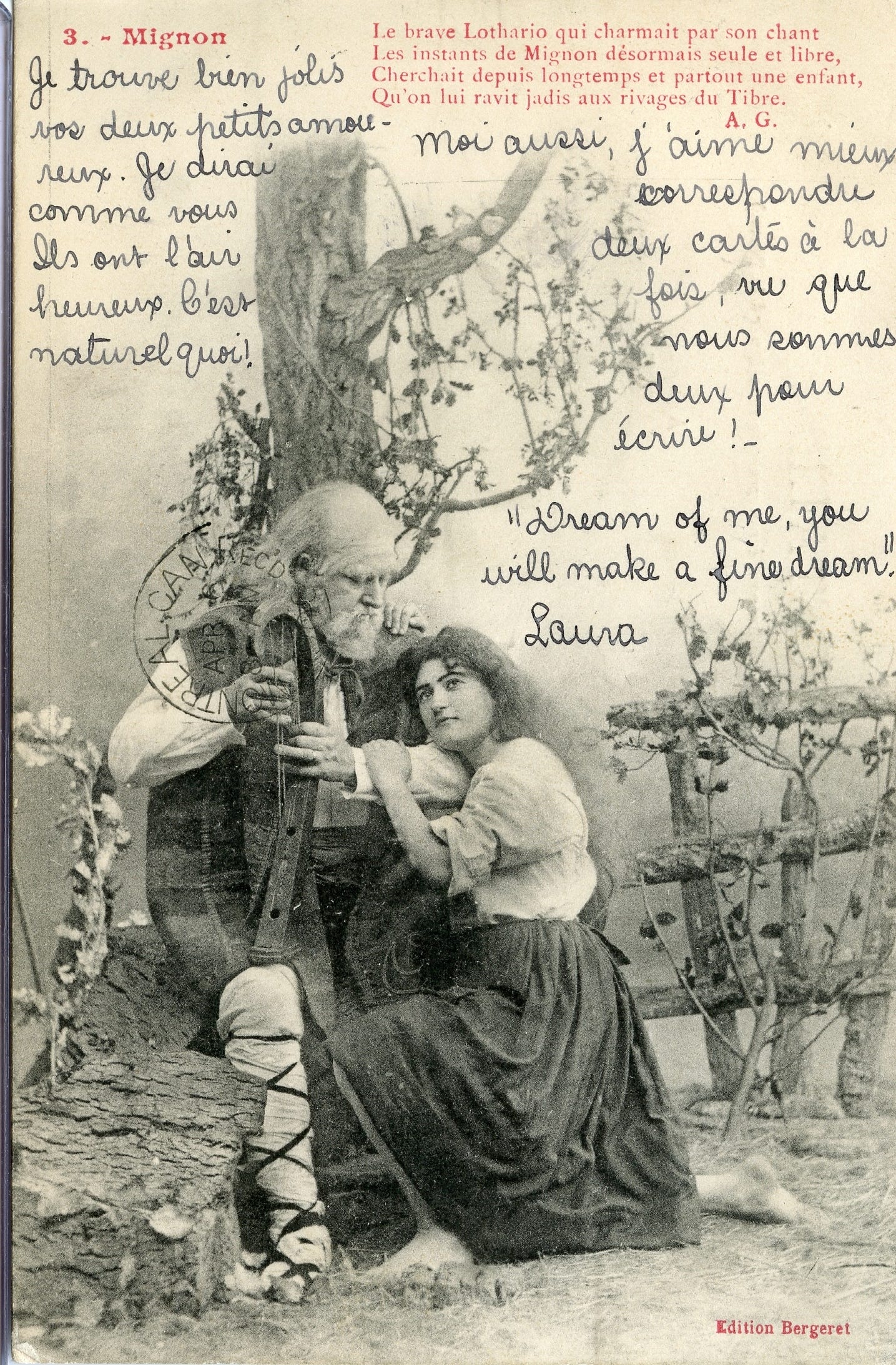
Collection - @Alvaro Pacheco
“I find these two little lovers so lovely. I say the same as you do, they seem so happy. Isn’t it so natural! Me too, I love exchanging two cards at a time, seeing as there are two of us corresponding. “Dream of me, you will make a fine dream.” Laura
I was bewitched, especially as the postcards are a chronological history between this young woman, Laura Lavoie, of French Canadian ancestry, living in Lewiston, Maine, US, and Baptiste, from Montreal, Canada, also French Canadian.

Collection - @Alvaro Pacheco
These cards would have traveled via train leaving Lewiston, all the way to downtown Montreal, stopping at 67 small stations on its slow way, and touched by many hands, reminding me of John Grierson’s wonderful film Night Mail .
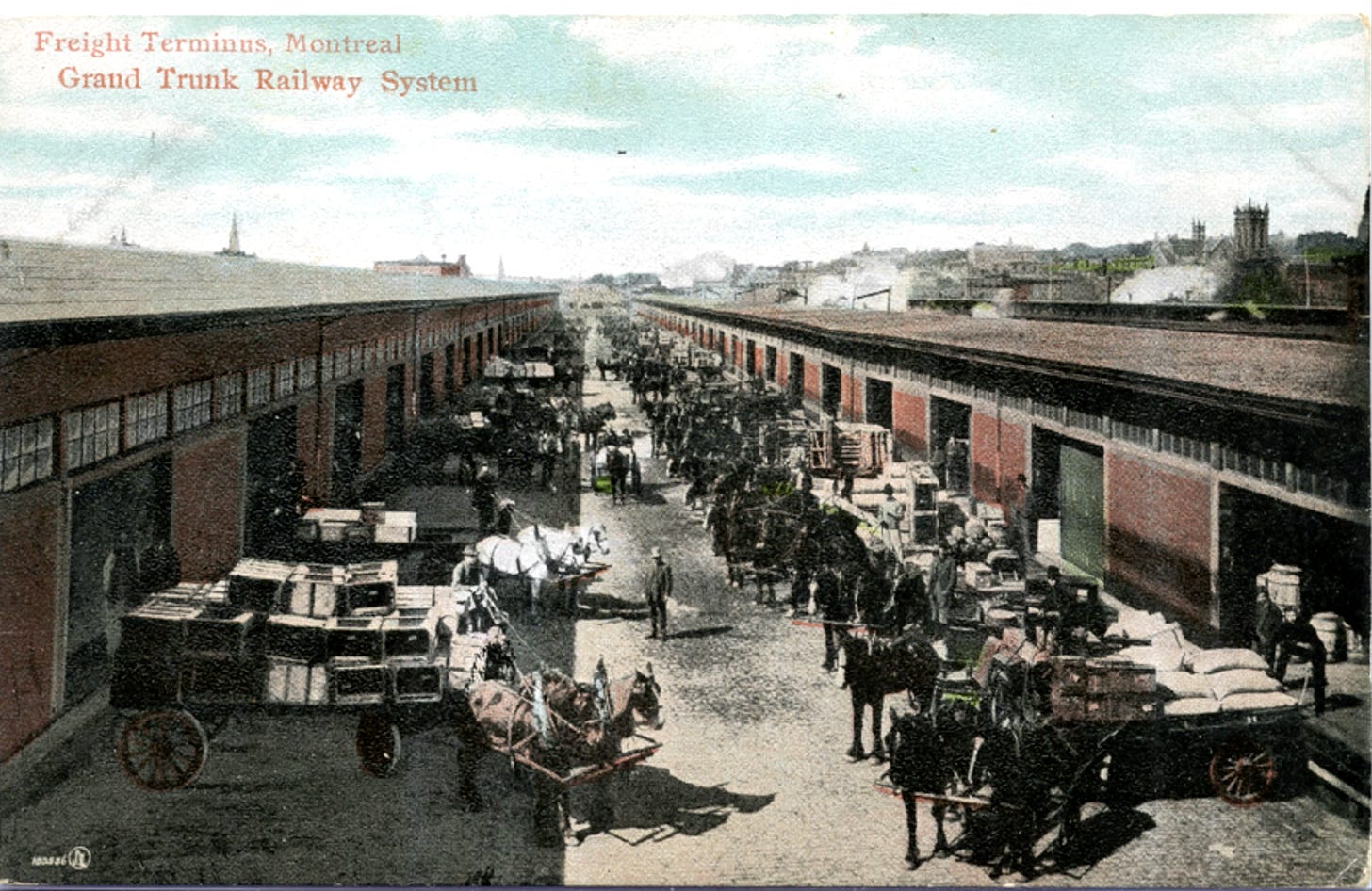
Collection - @Alvaro Pacheco
I dream about creating a short film using the cards and contents with a French voiceover, as the train chugs along, station-to-station, (Bowie!) Past the small towns, where I will go walk-about to find the children of the French Canadian migrants, and like Jack Kerouac, whose parents spoke to him in French before English, still keep the fleur de lys flying.
I obsess (sometimes) about Laura and her Baptiste. Who were they and what happened? The short lived postcard affair is a trail and a link into a past. Through reading Laura’s words this ardency for love comes alive. Laura comes alive.
There are only the cards from Laura to Baptiste, nothing from Baptise to Laura, sadly, so much needs to be imagined. What was he saying to her in reply?
Before showcasing these treasures which Alvaro keeps safely, locked up, in a drawer, somewhere in the west of Montreal, and creating a story around them, which I will for the next newsletter, here is a short history of postcards - by Alvaro Pacheco
The golden age
of the postcard was short lived. It began in earnest about 1905 and ended shortly before the First World War. These ten years of glory were preceded by a gestation of about 60 years.
First was the birth of modern photography with the invention of the Daguerreotype around 1840, followed by the implementation of the penny postage stamp around the same time under the auspices of Sir Rowland Hill.
The postal card was introduced in 1869, but with restrictions as to its use. The stamps were printed on the cards and what could be written on these cards was rather limited and was regulated by the postal authorities.
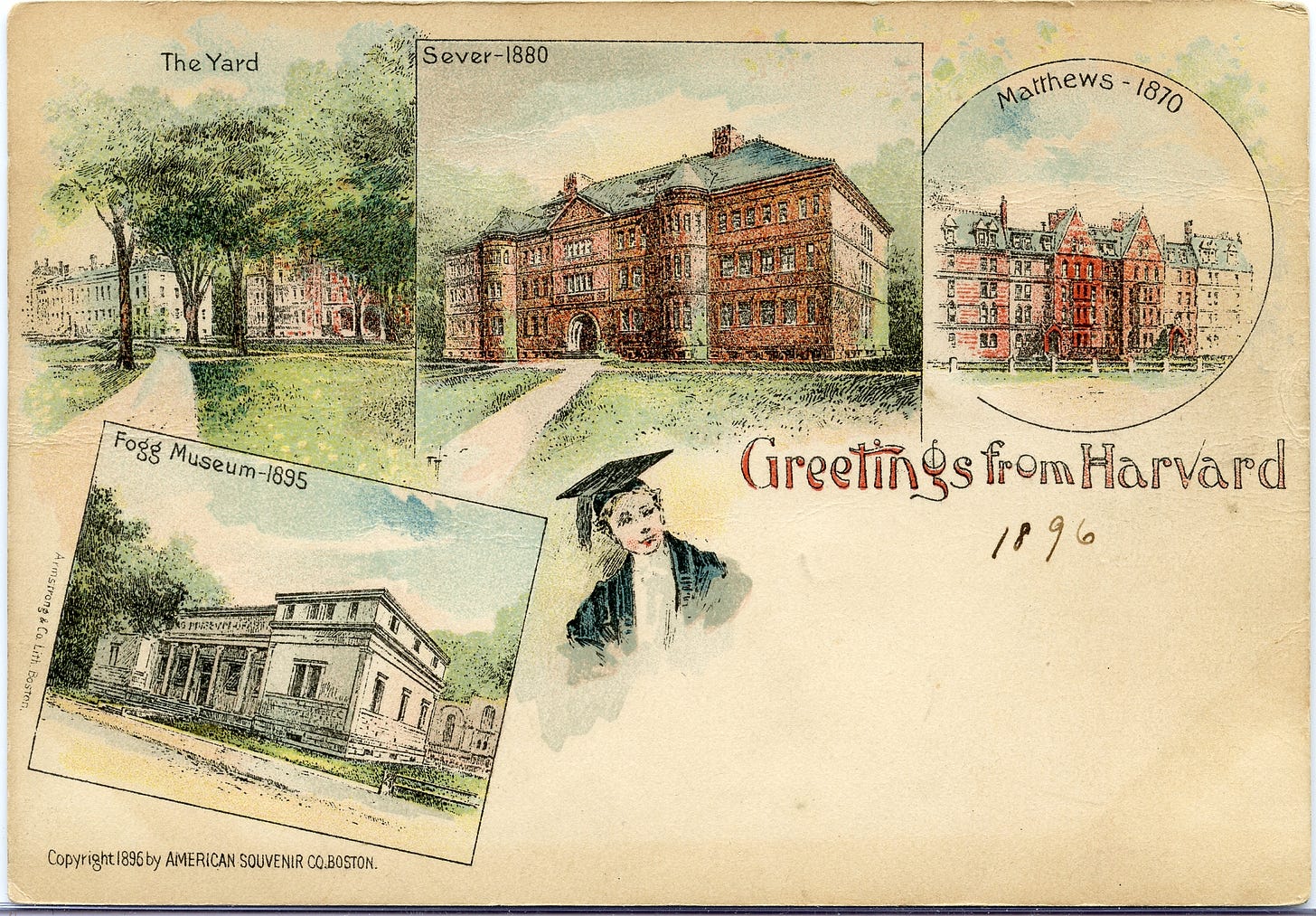
Collection - @Alvaro Pacheco
The postcard itself became generally available around 1895 and was published by private concerns. It was composed of a piece of rectangular board with a picture printed on the front, and on the other side there was place for the address, a short text, and of course a place reserved to glue the stamp.
There was one essential ingredient needed - the railway train. Whereas the Daguerreotype was born in 1840, the train itself saw public passenger service in 1825 thanks to George and Robert Stephenson. However, all three would meet, photography, train and stamp in 1840.

Collection - @Alvaro Pacheco
Prior to the postcard
some serious efforts were made to muzzle ordinary people from communicating. So the postcard was a true revolution and totally democratic. It gave everyday folks the opportunity to communicate with each other, as it could be sent at a lesser rate than a letter. However, the information written on the postcard could be seen by anyone who handled it during its transit from the sender to the intended recipient, so sometimes messages were coded or needed to be coded.
As electricity spread through the cities and cars began to appear, the telephone was also in its infancy. In fact the telephone and the car were the competitors of the postcard.
Around 1906
the postcard reigned supreme, while at the same time testifying to the arrival of the airplane. The ally of the postcard was naturally the train and the railway network. People began to use postcards in their daily communications. Since mail was delivered up to three times a day, the card written in the morning could announce a visit in the evening. The postcard allowed quick communication.
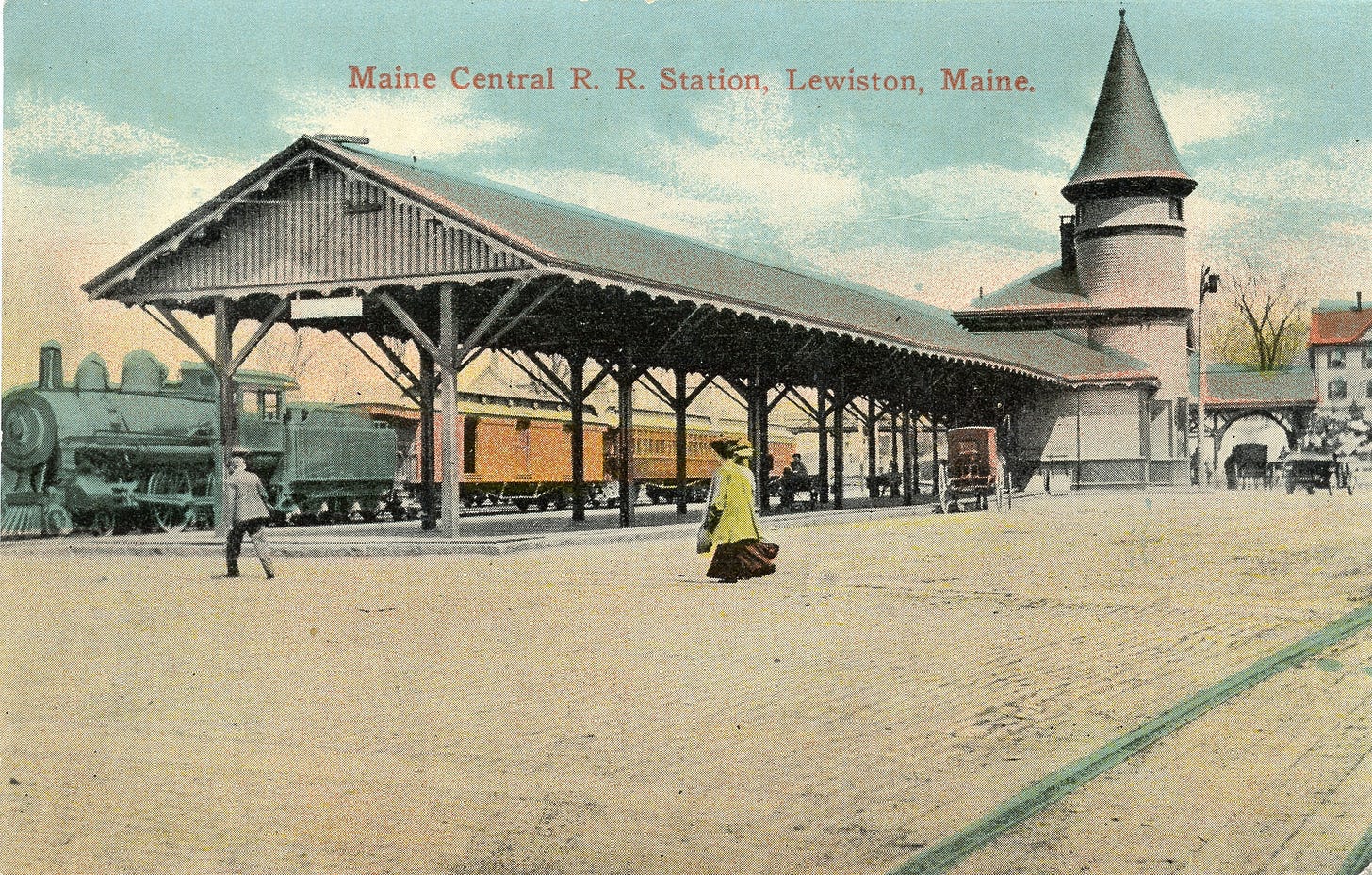
Collection - @Alvaro Pacheco
In the 1892 book A Diary of a Nobody, which I read every few years, the ridiculous Charles Pooter, the protagonist, constantly sends cards, or receives them from friends at an alarming rate. (Jeanne)
In 1840, the penny stamp which saved the day
Under the auspices of Rowland Hill, England inaugurated the service of the ordinary citizen's letter over a vast territory for the fixed sum of one penny. This possibility did not exist before. Letters had been passed on to travelers. Or else the letters were entrusted to stagecoach networks that charged prohibitive amounts. Before 1840, long-distance communications were reserved for wealthy individuals who had their own private communications networks. A famous example is that of the Rothschilds. In 1815 the Rothschilds knew the outcome of the Battle of Waterloo six hours before the arrival of the Royal Mail in London.
The postcard’s second ingredient
is of course, the photograph. The photograph was taken in 1840 by Monsieur Louis-Jacques-Mandé Daguerre with his daguerreotype.
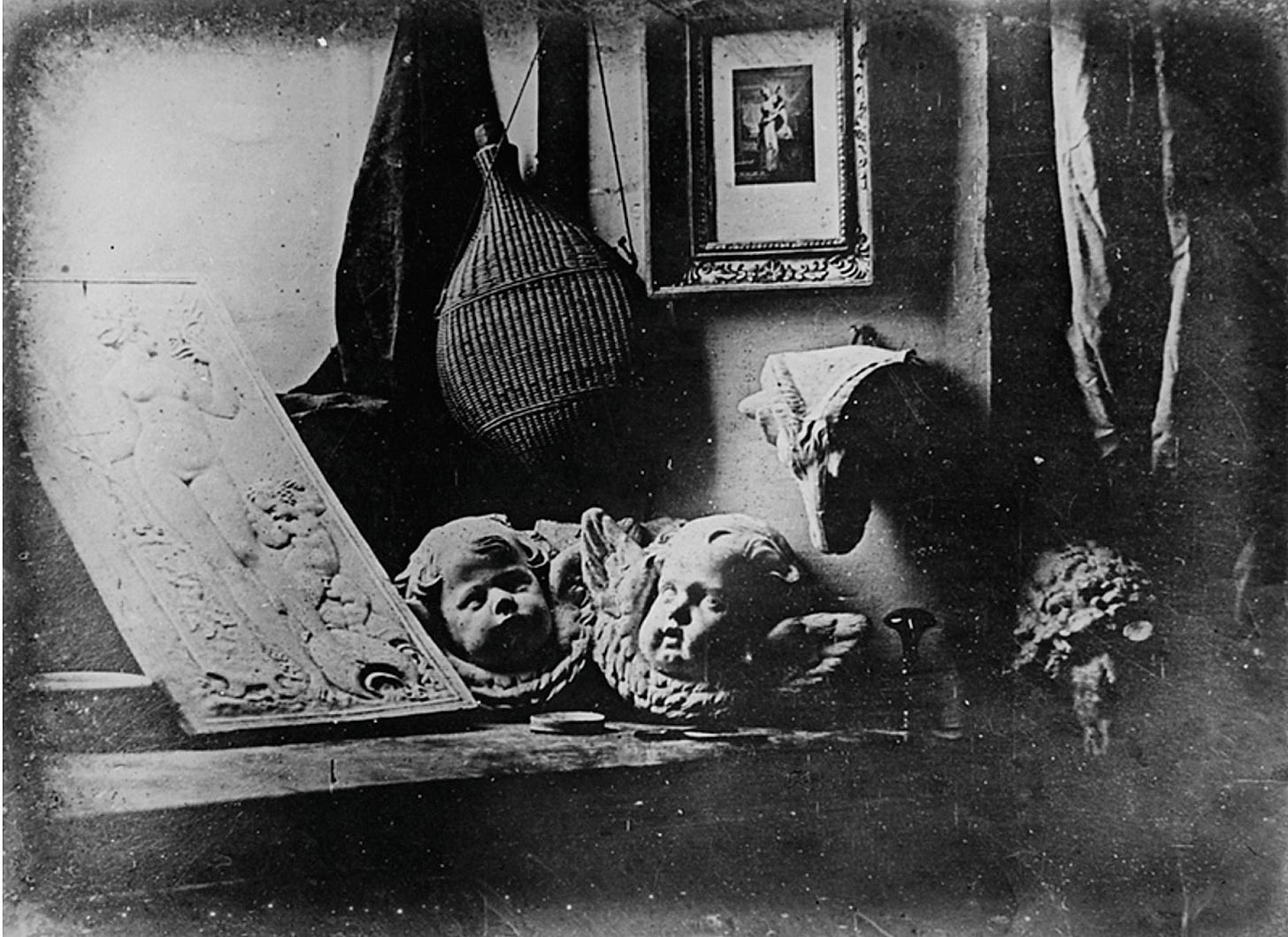
Louis-Jacques-Mandé Daguerre’s atelier @ Wikimedia - Public Domain
The postcard was not only used for communication between family members. It was used to advertise a product or service.

Collection - @Alvaro Pacheco
And used for propaganda.
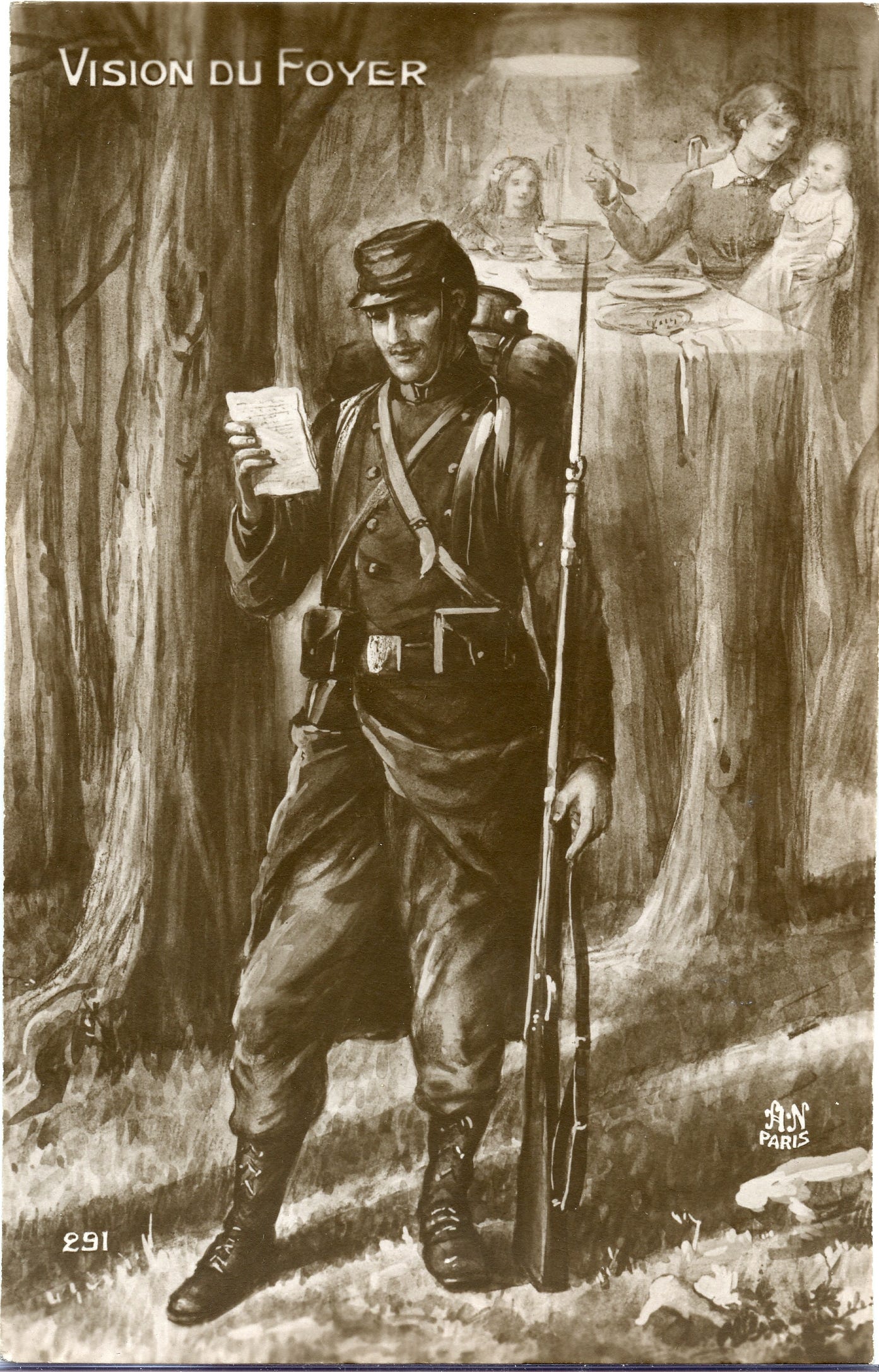
Collection - @Alvaro Pacheco
During WW1 a vast propaganda campaign was orchestrated by France. Armand Noyer owned a photographic studio, and helping the war effort by producing "patriotic" cards.
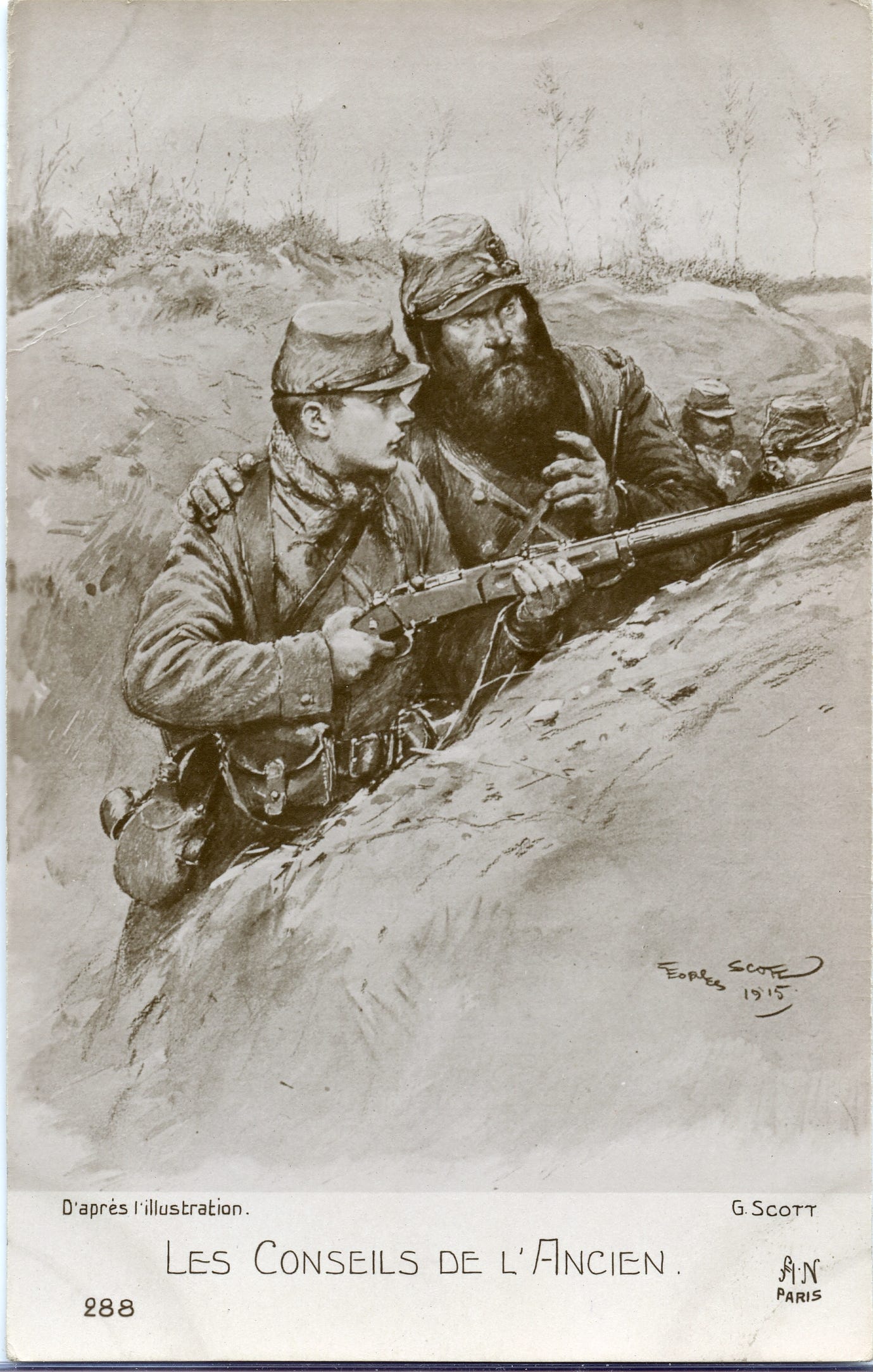
Collection - @Alvaro Pacheco
The postcard also allowed communication between foreigners. People with an open mind and the necessary financial resources sent cards to each other on a wide variety of subjects. These people belonged to Postcard Exchange Clubs. People who were looking for maps of exotic countries, or, as in Europe, people who wanted views of America.
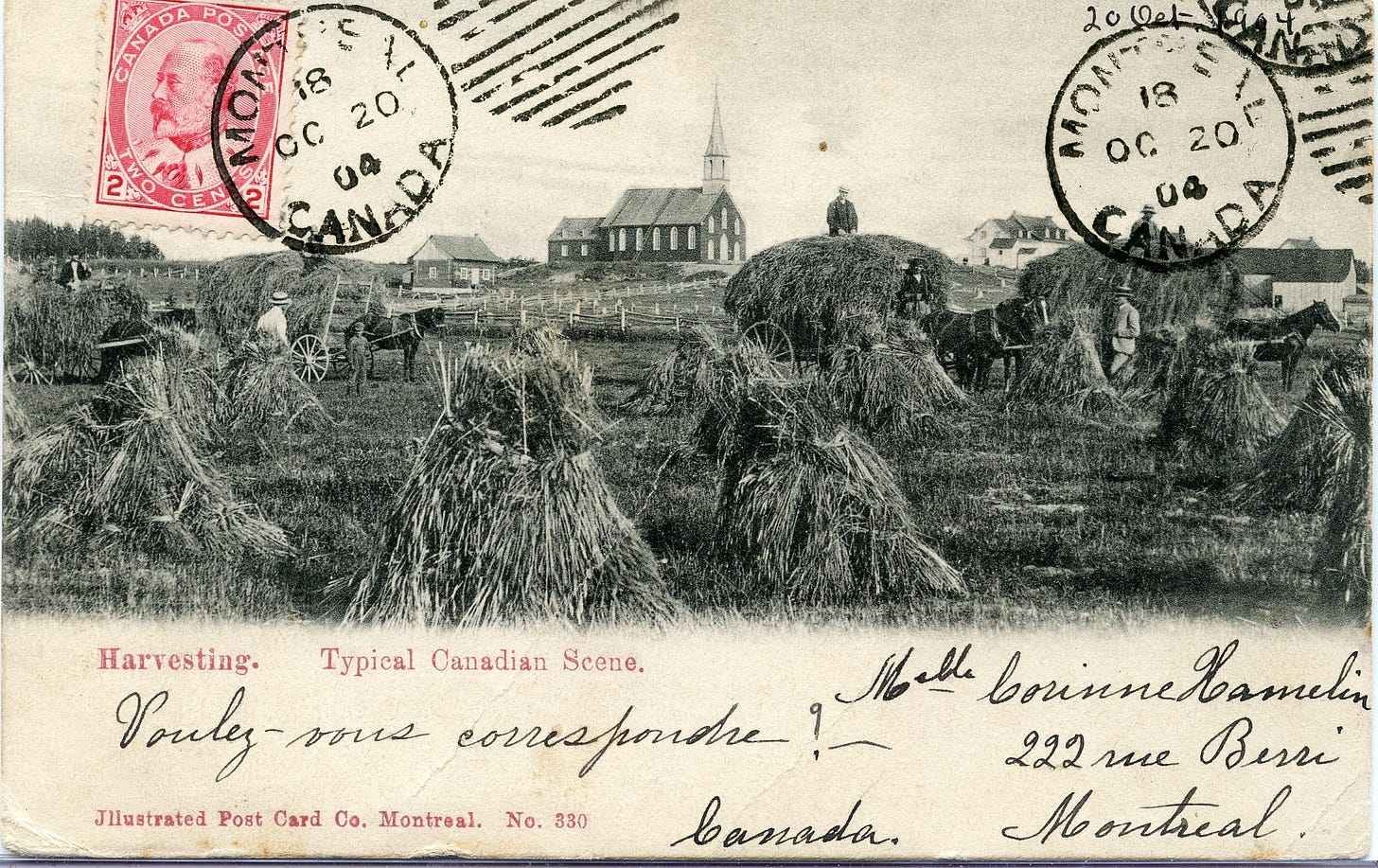
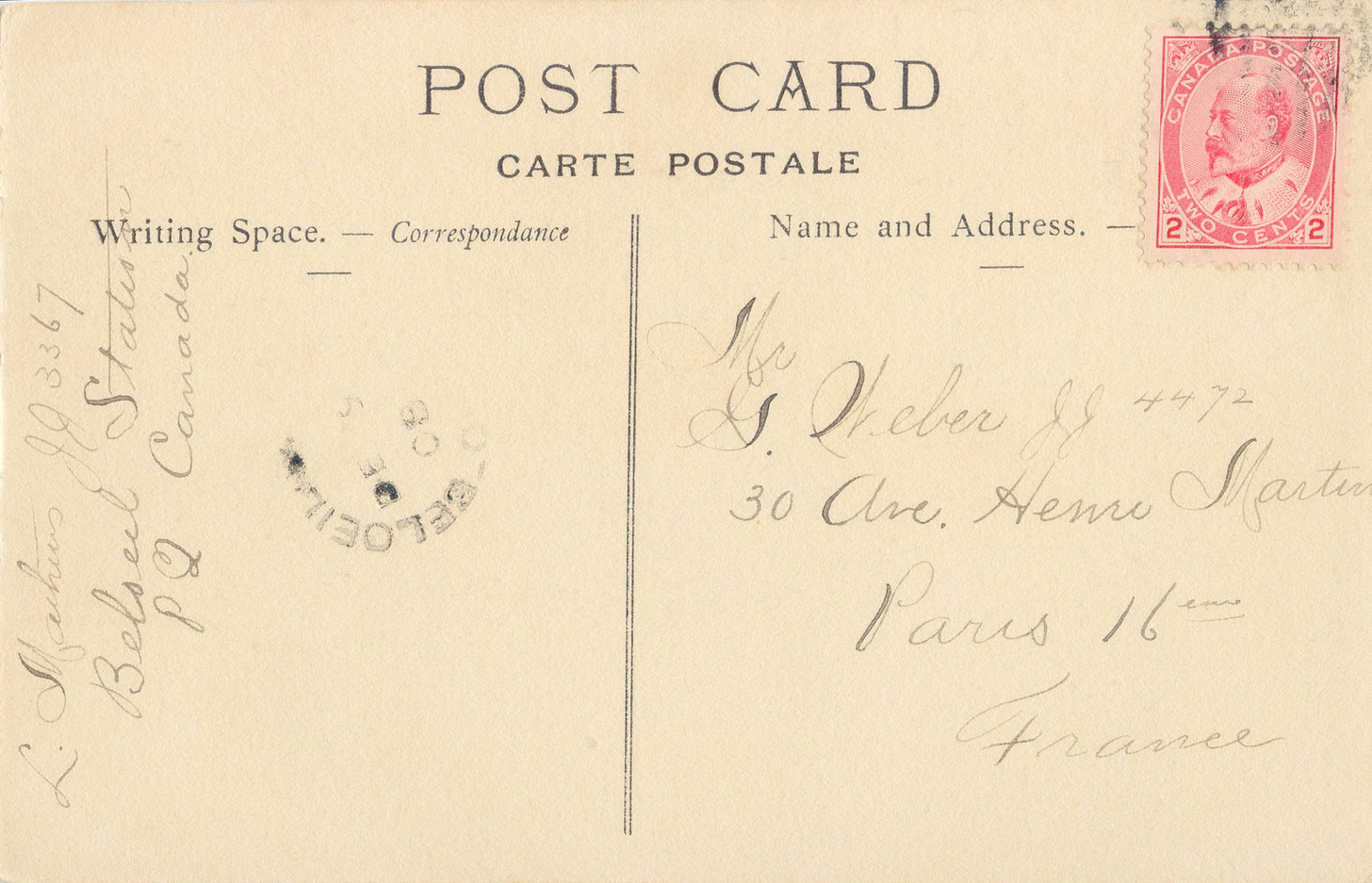
Collection - @Alvaro Pacheco
Of course, among the more fortunate and adventurous were those who brought the postcards back from the point of origin, either from an excursion or a cruise.
There was a particular type of postcard called “the romantic”. This type of card could be used by people who knew each other more intimately or was exchanged by strangers. Sometimes adverts were placed in newspapers for exchanging postcards.
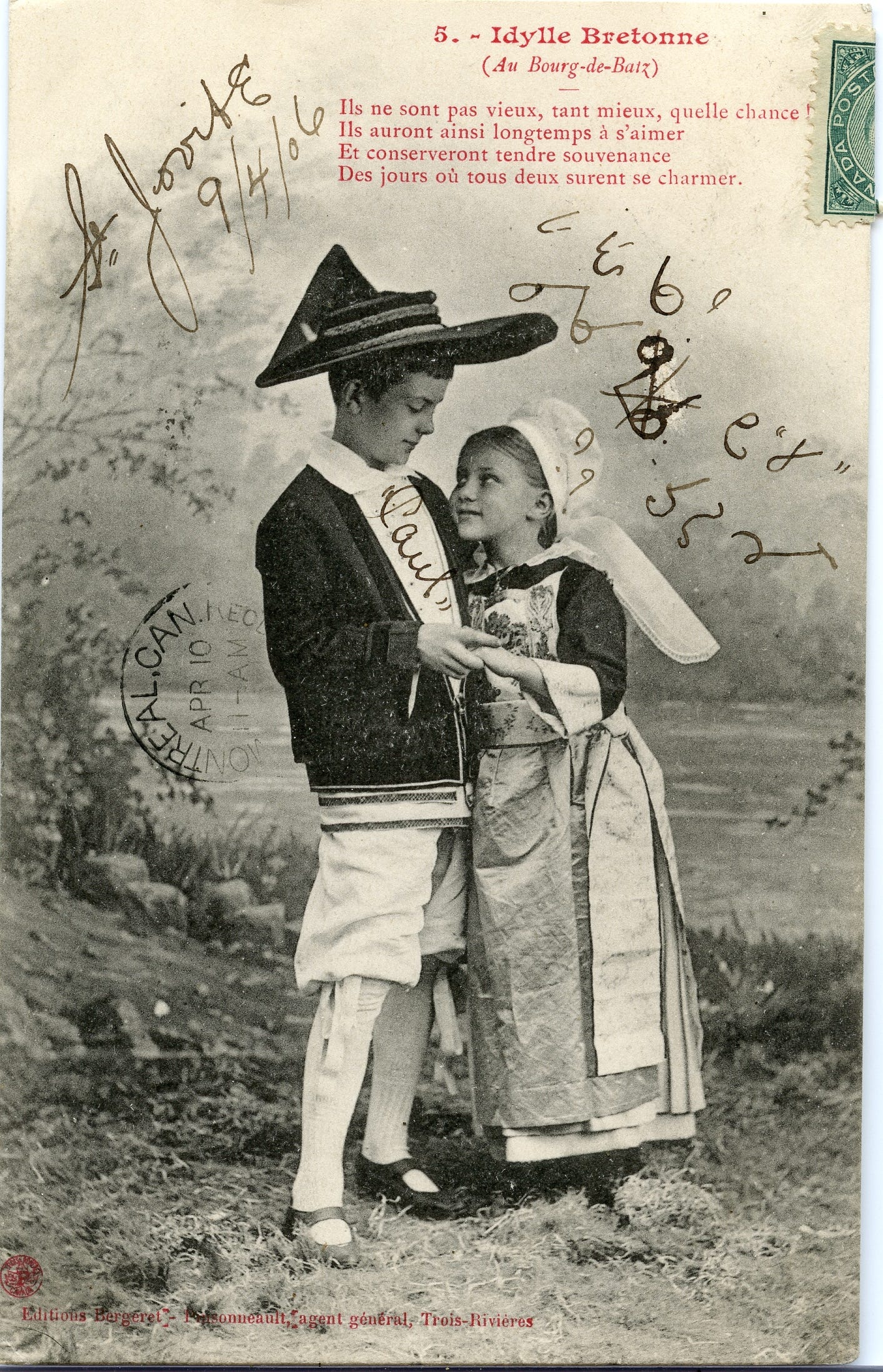

Collection - @Alvaro Pacheco
These were the type of cards that Laura sent to Baptiste. Did Laura first corresponded with Baptiste, a young Montrealer who was a stranger to her, through a postcard club?
Part 2 … Laura and Baptiste
There were all sorts of ways to initiate romance without really saying much. The stamps, how they were placed - a secret language - the photographs themselves.
And Laura seemed to be a lady in love.
For next time…
Thank you for dropping by. Have a great week.
Take a look a my documentary film workshops @




It's a shame that so few people send postcards now, so much more personal and memorable than an email.
YEt another amazingn newsletter! I love how can make any subject so interesting! This makes me so intrigued on all these letters. Theres a whole story to be told and imagined. I truly love this .